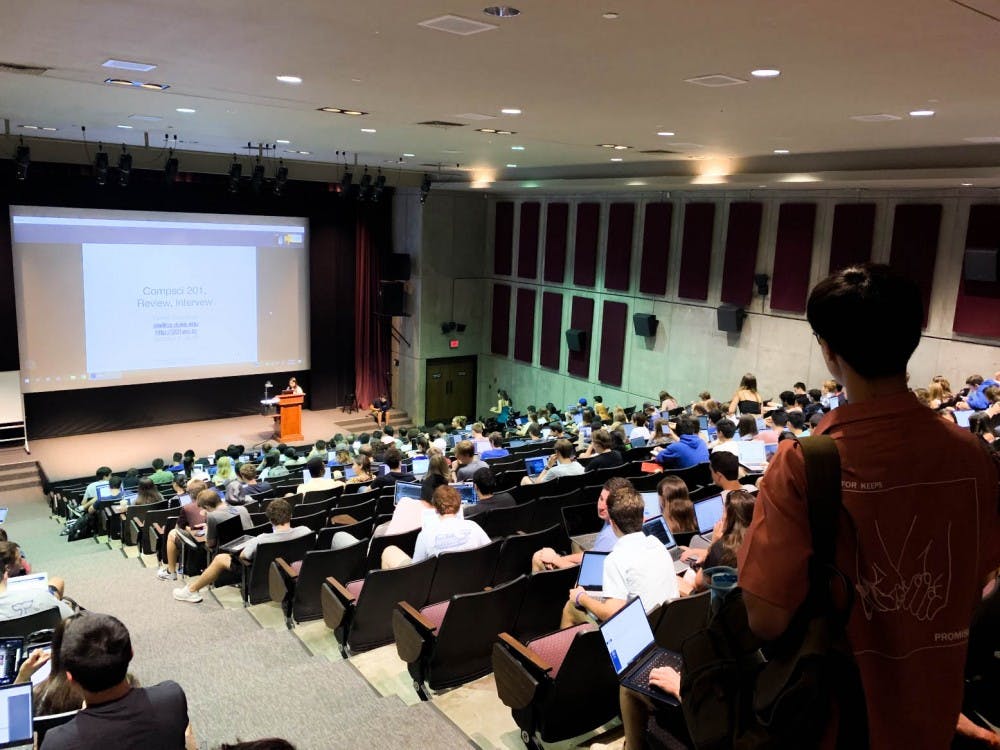In the first week of classes, students taking Computer Science 201 walked into the Bryan Center’s Griffith Film Theater, which has a seating capacity of 500, to find the lecture nearly packed from the first row to the last. Laptops were wide open, creating a sea of screens that lit up the theater as students waited for Owen Astrachan, professor of the practice of computer science, to begin the first lecture.
The packed class was not an exception for computer science, which is the most popular major at Duke since at least Fall 2018. There are 734 students majoring in computer science currently, wrote Camelia Pierson Eaves, undergraduate program coordinator for the department, in an email. She added that 1,746 undergraduate and 376 graduate students are enrolled in computer science courses (which likely includes students enrolled in more than one course in the department.)
Computer science is one of the fastest-growing majors at American universities. According to the 2018 Taulbee Survey, an annual survey conducted by the Computing Research Association, enrollment in computer science majors at U.S. colleges increased by 8.7% this year, following a 13.3% growth last year and a 24.8% upward spurt the year before.
The popularity of computer science isn’t a surprise for those involved in the program. Sophomores Abbey List and Laura Li work with the department as undergraduate teaching assistants.
“I think people are getting more exposure to CS in grade school,” List said. “There are a lot of programs that introduce computer science to elementary school students.”
Elementary schools are promoting computer science to their students, taking advantage of online resources that attract young students with simple, easy-to-use coding. Computer science is also increasingly accessible, with the U.S. Census Bureau reporting that almost 90% of U.S. households have a computer.
First-year student Anuj Som has grown up in this world of increasing access to technology.
“I know that young people see the value of technology,” Som said. “It’s very accessible nowadays and people can pull up code wherever. It’s not limited by the resources you are given.”
Som told The Chronicle that he appreciated the new resources offered, including online resources and TA-led review sessions.
These TA discussions are among the ways that the department is trying to cope with its increasing numbers. List and Li both teach a weekly discussion section of 20 students.
“[Astrachan] said he wants to make it a class where you can discuss with peers and ask questions instead of lecture halls,” List said.
The department has also expanded its course options this year, adding classes such as “Algorithms in the Real World.” One of the new courses—Computer Science 102—is an introductory course that will be available in Spring 2020. The course aims to draw a link between programming and other areas of study—natural science, social science, engineering and the humanities—to consider real-world problems.
Get The Chronicle straight to your inbox
Signup for our weekly newsletter. Cancel at any time.

